The HyLogger spectral scanner is a rapid spectroscopic logging and imaging system that uses continuous visible and infrared spectroscopy and digital imaging to examine cores, samples and cuttings without destroying them in the process.
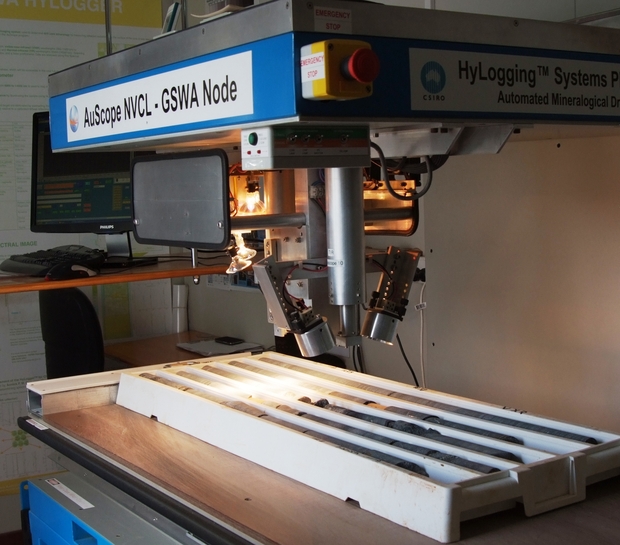
HyLogging is a highly automated technology designed by CSIRO to determine drillcore mineralogy using rapid reflectance spectroscopy at 400–2500 and 6000 – 14 500 nm wavelength regions. The HyLogger-3 system is capable of detecting common rock-forming minerals (feldspar, quartz, pyroxene, garnet, olivine, carbonate and phosphate), as well as iron oxides and a number of hydroxyl-bearing minerals (micas, chlorites, amphiboles, clays and sulfates).
The Geological Survey of Western Australia’s (GSWA) HyLogger was installed in July 2009 at the Perth Core Library in Carlisle. It is one of seven machines in Australia that together make up the AuScope National Virtual Core Library (NVCL) consortium. The consortium is a Federal and State collaborative project which aims to provide drillcore mineralogical and image data in a standard format.
The data collected from core scanning, coupled with simultaneous acquisition of high-resolution digital photographs of scanned core, can provide new insights into host rock and alteration mineralogy, vectors to mineralisation, objective determination of lithostratigraphic units and their boundaries, and refined inputs to resource block modelling and geometallurgical characteristics.
Requests for HyLogging core
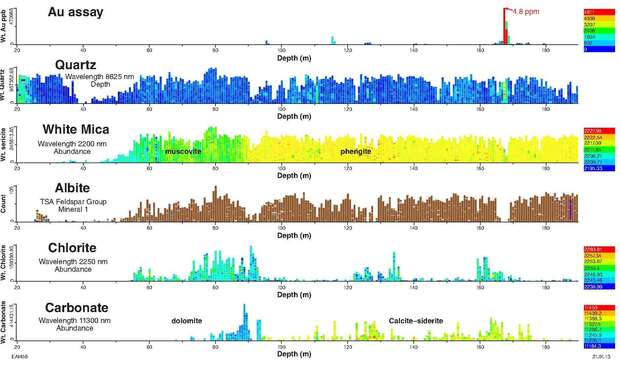
GSWA is systematically collecting hyperspectral data for open-file mineral and petroleum core retained in its Perth and Kalgoorlie core libraries, including core obtained via the Western Australian Government’s Exploration Incentive Scheme (EIS) Co-funded Drilling Program.
The HyLogging schedule is ordinarily determined by GSWA work programs and core availability, but special requests for particular cores to have priority can be submitted for consideration. Such requests should be accompanied by a justification for requiring the hyperspectral data (for instance, a brief description of a research project and potential significance of the hyperspectral data for this project).
The HyLogger facility does not undertake commercial scanning of drillcore, but will consider requests for scanning privately owned core free of charge if:
- such requests are made as part of a collaborative research project with GSWA staff
- the data and any associated analytical and interpretive work are released to the public domain as soon as practicable.
All requests for HyLogger scanning of core, and any other related enquiries, should be submitted to HyLogger@dmirs.wa.gov.au.
Access to HyLogging data
There are three ways to access HyLogging data:
- Any non-confidential datasets are available to copy by contacting HyLogger@dmirs.wa.gov.au. Please arrange a visit and bring your external hard drive.
- Processed spectral data, mineralogy, and high-resolution core images are progressively uploaded to a web service on the AuScope Portal (go to Boreholes, National Virtual Core Library). These datasets are available for download.
- HyLogging data can be found and copied from the department’s interactive map viewer, GeoVIEW.WA (go to Drillholes: HyLogger Drillholes).
List of scanned holes
-
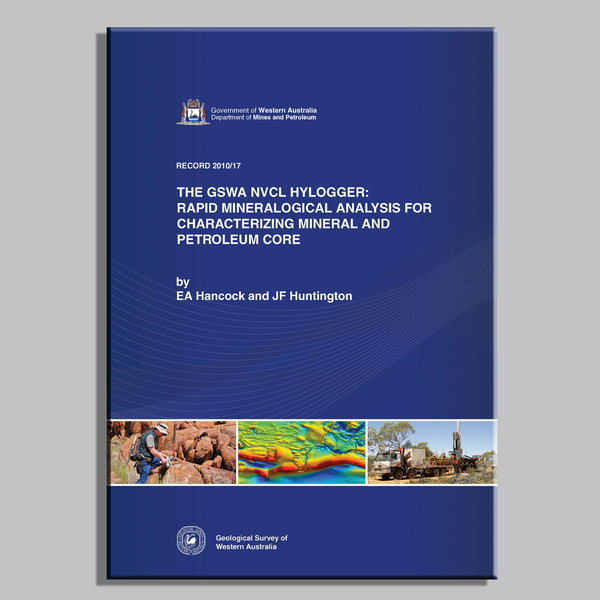 Record 2010/17 The GSWA NVCL HyLogger: rapid mineralogical analysis for characterizing mineral and petroleum core
Record 2010/17 The GSWA NVCL HyLogger: rapid mineralogical analysis for characterizing mineral and petroleum core
-
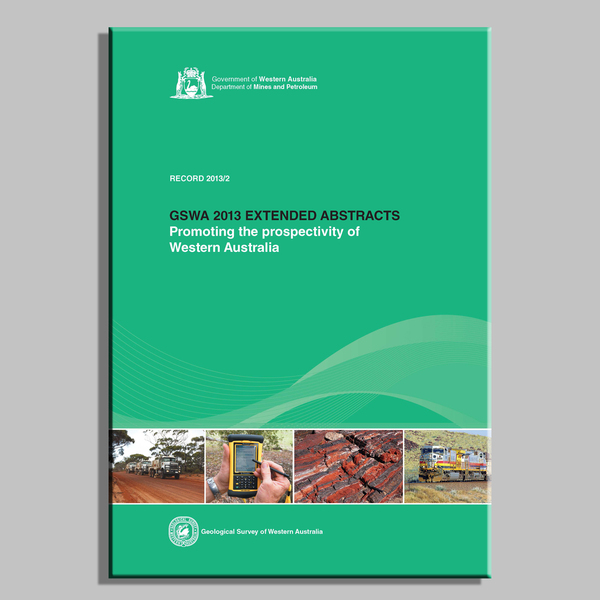 Record 2013/2 GSWA 2013 extended abstracts: promoting the prospectivity of Western Australia
Record 2013/2 GSWA 2013 extended abstracts: promoting the prospectivity of Western Australia
-
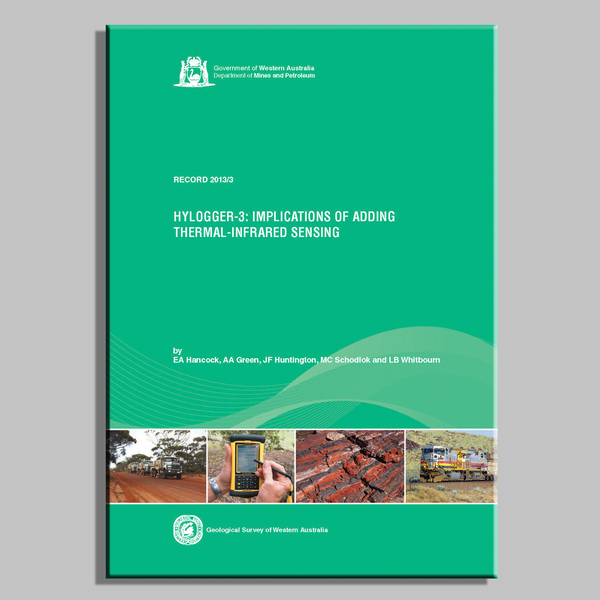 Record 2013/3 HyLogger-3: implications of adding thermal-infrared sensing
Record 2013/3 HyLogger-3: implications of adding thermal-infrared sensing
-
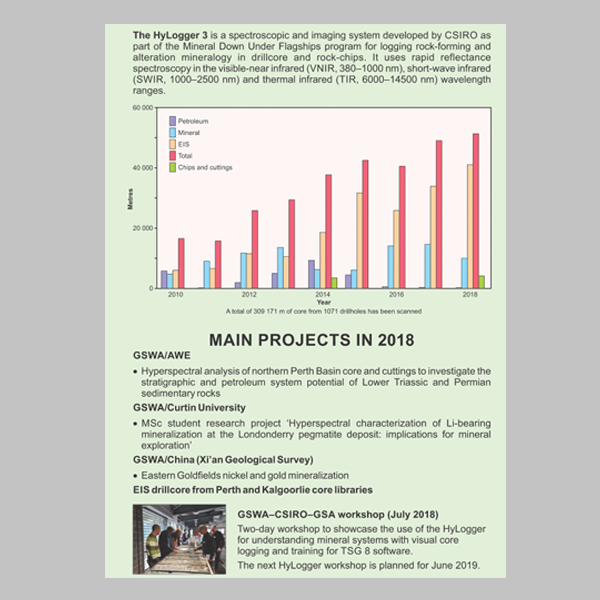 National Virtual Core Library GSWA Hylogger 3
National Virtual Core Library GSWA Hylogger 3
Contact
For more information contact:
HyLogger@dmirs.wa.gov.au
